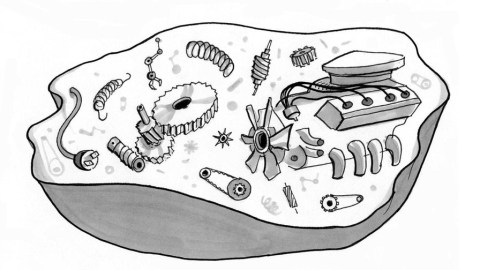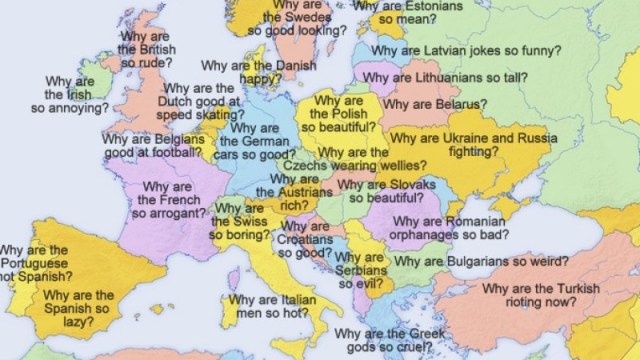Does Life Work Like a Car Engine With Souped-up Complexity?

1. Does life work like our machines? Like cars sporting souped-up complexity? That tempting template hampers our tinkering under life’s hood.
2. E. coli’s single-celled life is “like a self-building, self-multiplying, self-healing race car that can run on kerosene [or] Coca-Cola,” says Andreas Wagner (Arrival of the Fittest: How Nature Innovates).
3. But cells have changing parts list. They’re like cars that build and recycle sparkplugs every firing cycle. Life builds umpteen temporary components, choreographing flashmob-like molecular fabricators for its transient machinery.
4. E. coli utilizes life’s ~60 molecular “building blocks,” its 4,000 – 5,500 genes orchestrate 1,300 densely interwoven fluctuating biochemical reaction circuits—>a dynamic complexity utterly unlike our machines.
5. Each eukaryotic cell is vastly more complex than our hottest tech. “No self-respecting human engineer” would devise such seemingly disorderly, inefficient, complexity.
6. “Nature doesn’t just tolerate disorder. It needs some disorder” (Wagner). And complexity.
7. Biology lives in a region of reality that resists Occam’s Razor—life needs complexity-enabled robustness.
8. Robust solutions are like streetscapes offering many routes around roadblocks. Life’s biochemical circuits leverage similar re-routable-ness. Enabling E. coli to thrive on 80 different fuels (=diverse environments).
9. Why would our ~19,000 (microbiome supplemented) genes occupy ~2% of our DNA?
10. Partly because genes are like guitars, uselessly silent unless played (“mere presence of a guitar in your bedroom doesn’t make you Slash”—Ed Yong). Detection ≠ usage details (≠ roles played ≠ where).
11. Our 30 trillion cells each, millions of times daily, unpack and play thousands of genes, exactly on cue.
12. Those cues often aren’t simple on-off switches, they’re tuned to the logic of many signals. For instance, the gene for crystallin has 5 regulators, each with off, low, medium, and high settings.
13. And regulators can regulate other regulators forming daisy chains and cascades (twiddling “the knobs” of hundreds of genes). In this symphony each instrument can be an orchestra of genes.
14. Our 98% non-gene DNA has ~3 million control elements, ~150,000 active per cell type.
15. This mind-boggling dynamic complexity means machine-like (stable parts-listed) thinking can mislead.
16. The genes/parts usage patterns of our cells isn’t known—>a “Human Cell Atlas” effort is underway.
17. Gene-editing tools like CRISPR “will supposedly hack diseases out of our DNA, but… how do we know what to edit?” In which cell types? +Gene products often ≠ monofunctional (eye-lens crystallin is active in the pancreas and nervous system).
18. Indeed, “editing is a bit of a misnomer.” CRISPR is like cut-and-paste on a vastly complex dynamic polysemic text or symphony or movie, where only snippets of the plot are known.
19. An Occam-preoccupied machinelike mindset can skew research, e.g. neuroscientists seeking “a gene for psychosis” or disease “neurosignatures.”
20. Few traits or illnesses are monogenetic. Few will be easily “editable.” Few illnesses will likely have simple (error code) signatures.
21. We’re babystep beginners at the dynamic logic and chemical semantics of biology’s teeming transient molecular machinery.
Illustration by Julia Suits, author of The Extraordinary Catalog of Peculiar Inventions, and The New Yorker cartoonist.





